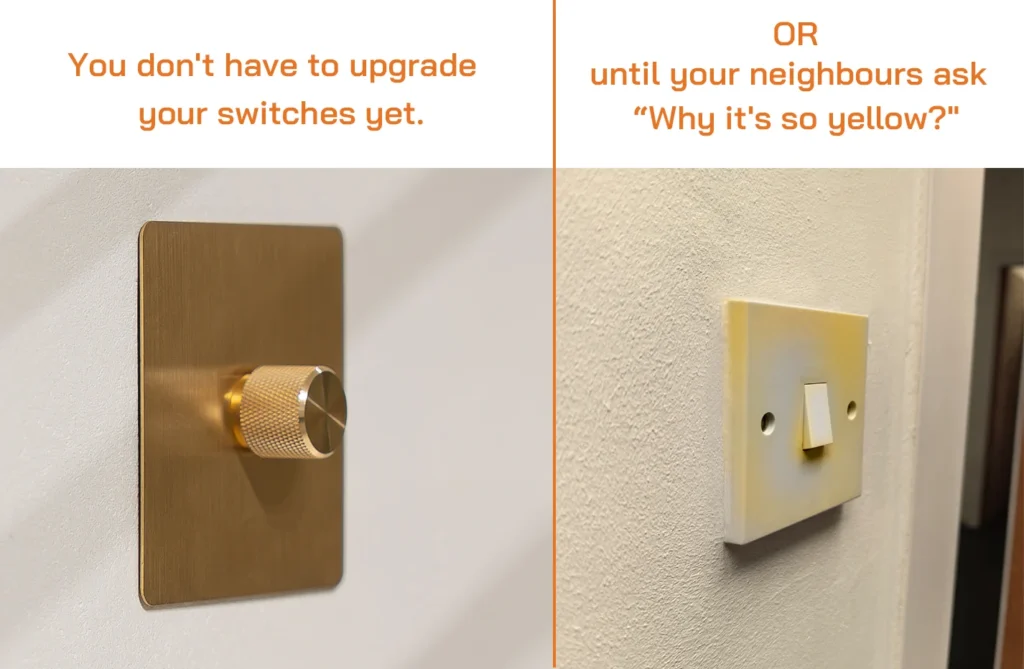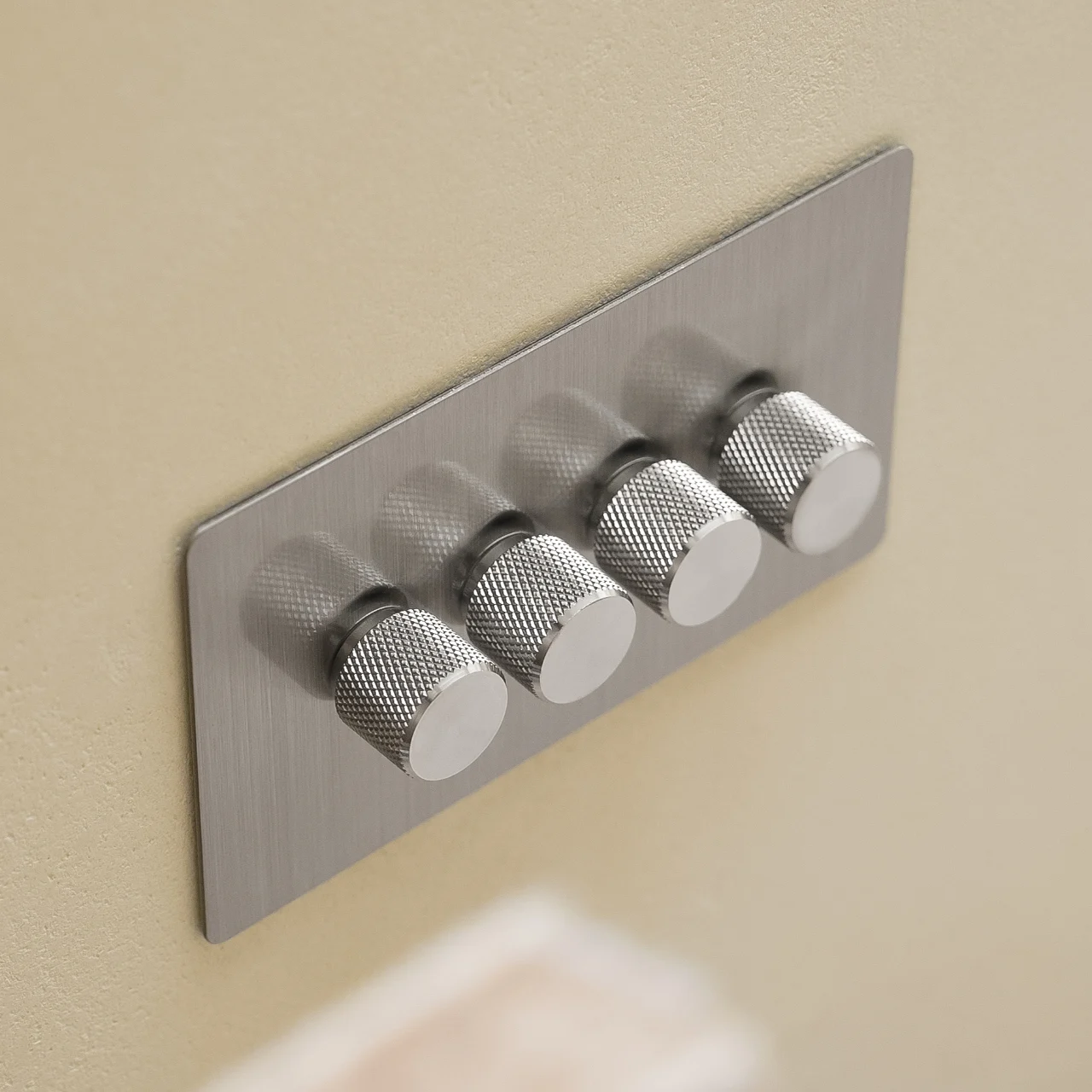
Thinking of saving a few quid on light dimmer switches? Think again. Discover the hidden costs of cheap switches and why investing in a quality dimmer like Repenic truly pays off in the long run.
Table of Contents:
Alright, let’s talk about something that might seem small but can actually be a massive headache (and a drain on your wallet!). You’re knee-deep in home renovations, right? Budgeting every penny, trying to make smart choices. And then you get to the light switches. “Oh, I’ll just grab the cheapest ones,” you might think. “They all do the same thing, don’t they?”
Spoiler alert: They absolutely do not.
You’ve spent weeks, maybe even months, planning your perfect space. You’ve agonised over paint swatches, chosen the perfect flooring, and found furniture that speaks to your soul. Now, it’s time for the finishing touches. And there, on the list, are the light switches and dimmers. It’s tempting, isn’t it? After spending so much on the big-ticket items, it feels almost sensible to save a few quid on these “minor” details. You grab the budget plastic option, feeling savvy.
But have you ever paused to calculate the real cost of that cheap light switch? Let’s be honest, it’s far more than what’s printed on the price tag. Let’s do the maths.
The most immediate, tangible cost beyond the initial purchase is the inevitable replacement cycle. It’s a false economy, and here’s why:
Materials Tell the Story: A cheap switch is made of, well, cheap plastic. Over a surprisingly short time, that brilliant white begins to yellow under sunlight. It becomes brittle, prone to cracking if knocked. In contrast, a Repenic dimmer is crafted from a solid piece of Brass or Steel. It doesn’t yellow, it endures.
The Failing Mechanism: Beyond the surface, the internal mechanism of a budget switch is its weakest point. That initially crisp ‘click’ soon fades into a mushy, unsatisfying press. It might fail altogether, leaving you with a switch that simply stops working.
The Real Calculation: Let’s say a Repenic switch is built to last for decades. In that same span, you might replace a cheap plastic switch two, three, or even four times. Suddenly, the cost isn’t just £3 x 3 = £9. It’s £9 plus your own valuable time sourcing and fitting the replacements, or the not-insignificant cost of calling out an electrician each time. The “bargain” has quickly become a recurring expense.

This cost isn’t on any receipt, but you pay it every single day. It’s the “Daily Annoyance Tax,” and it comes in two forms: physical and functional.
First, the physical touchpoint. Your light switch is one of the most frequent interactions you have with your home. With a cheap switch, that interaction is a hollow, unsatisfying plastic-on-plastic click. It feels flimsy. It subtly undermines the feeling of quality you’ve worked so hard to build.
Second, and far more frustrating, is the functional tax of a cheap dimmer. You install it, only to be plagued by a constant, irritating flicker. You hear an audible buzz every time you dim the lights. Or worse, it’s simply incompatible with your new, energy-efficient LED bulbs, refusing to work properly. Each time this happens, it’s a tiny, subconscious reminder of a compromise that failed.
Now, imagine the alternative. The solid, cool touch of metal. The smooth, reassuring resistance of a well-engineered dial. This is the feeling of quality. But it’s also the feeling of confidence. The confidence of knowing that when you dim the lights, you will get a smooth, linear glow with no flicker and no buzz. It’s the peace of mind that comes from a universal dimmer engineered to handle any light bulb you choose. This isn’t just a function; it’s freedom from daily annoyance. That is priceless.
This brings us to the most important shift in mindset: viewing a Repenic switch not as an expense, but as an investment. And it pays dividends in three key ways:
A Dividend of Durability: With its solid metal construction and the precise control it offers, a Repenic Universal Dimmer is an investment in peace of mind. It’s designed to withstand years of daily use and handle virtually any bulb, now or in the future. You buy it once.
A Dividend of Joy: This is the payoff for avoiding the annoyance tax. Instead of a daily dose of disappointment from a flimsy feel or flickering light, you get a daily dividend of satisfaction. The gentle Fade-in start, the perfect ambiance at your fingertips—it’s a small luxury that elevates your everyday life. With Repenic, you can customise the minimum brightness level to eliminate any flicker at the lower end, while the maximum brightness automatically adjusts for optimal performance.
A Dividend of Home Value: It’s a known fact in the property market: quality fittings matter. Potential buyers notice these details. A solid brass dimmer that works flawlessly with modern lighting signals that the owner invested in quality throughout. It’s a modern, compatible feature that enhances the perceived value and appeal of your property.

So, what is the true cost of a cheap light switch? It’s the initial price, plus the cost of multiple replacements, plus the tax you pay in daily physical and functional annoyance.
And the true value of a quality Repenic Universal Dimmer? It’s a single investment that pays you back with enduring performance, daily satisfaction, and enhanced home equity.
When you look at it that way, the choice becomes clear. Don’t just buy a light switch. Invest in a piece of your home’s future.
Stop paying the annoyance tax! Upgrade to a Repenic Universal Dimmer today and experience the true value of quality lighting control.

Product manager at Repenic
Want your home to outshine the neighbours?
We’ll drop you the occasional tip on how to do just that.
No spam. Just style inspiration.
By clicking “Subscribe” I consent to receiving commercial information to the above e-mail and to having my data processed in connection with the newsletter.